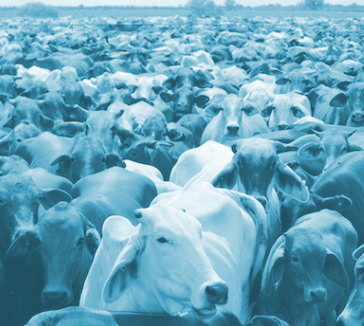Food fix proposed
 A new report maps pathways towards lower livestock emissions.
A new report maps pathways towards lower livestock emissions.
In light of a growing global population and an anticipated 20 per cent surge in demand for terrestrial animal products by 2050, there is a pressing need to reduce greenhouse gas emissions from the world's livestock systems.
Released during the UN Climate Change Conference COP28, a report titled ‘Pathways towards lower emissions – A global assessment of the greenhouse gas emissions and mitigation options from livestock agrifood systems’ has set the stage for policymakers, industry players, smallholders, and consumers to step up their efforts in mitigating emissions.
Apart from assessing current emissions, the report also presents future emission estimates under various production scenarios, highlighting strategies to reduce emissions through established best practices in animal management.
“Solutions such as improving animal health, breeding practices, reducing food loss and waste, and directly targeting GHG emissions have the potential to provide multiple benefits for people and the planet,” says Maria Helena Semedo, Food and Agriculture Organization of the United Nations (FAO) Deputy Director-General.
The report emphasises that these interventions must be site-specific and include measures to facilitate access to finance and services for farmers to implement tailored solutions.
In 2015, livestock agrifood systems were responsible for approximately 6.2 billion tonnes of CO2 equivalent emissions per year, equaling 12 per cent of all anthropogenic GHG emissions.
Without intervention, these emissions could reach 9.1 GtCO2eq by 2050. Cattle contribute the most, at 62 per cent, followed by pigs (14 per cent), chickens (9 per cent), buffaloes (8 per cent), and small ruminants (7 per cent).
Direct emissions, mainly methane from enteric fermentation by ruminants and nitrous oxide from manure management systems, account for 60 per cent of the sector's emissions.
The rest originate from the manufacture of fertilisers and pesticides, feed production, transportation, and land-use changes related to feed production.
To address disparities in emissions intensity across countries, species, and production systems, the report employs the Global Livestock Environmental Assessment Model (GLEAM), offering insight into the most promising mitigation potential.
While the report outlines several pathways to reduce emissions, it underscores the importance of enhancing productivity and production efficiency throughout the livestock value chain as the most effective means of mitigating emissions.
The report's ultimate goal is to help the livestock sector contribute to limiting global temperature increases to below 2 degrees Celsius.
It emphasises the availability of emission-reducing options for all regions and production systems and calls for investments to accelerate concrete actions. Additionally, it highlights the need for tailored local mitigation strategies integrated into broader programs supporting rural resilience and sustainability goals.
Though some solutions, such as agroforestry and optimised grazing, have potential, economic viability remains a challenge.
Addressing nitrogen emissions through swill from household waste in pig diets could lead to substantial reductions but requires investments in infrastructure and regulations to ensure safety.
Advanced breeding and feed mixtures, while effective, may face cost, safety, and accessibility limitations.
Improving animal health emerges as a robust approach to increasing livestock production efficiency without the need for larger herds or flocks, reducing emissions intensity.
The FAO's Sustainable Livestock Transformation Initiative supports countries in transitioning to a sustainable livestock sector, focusing on developing and implementing accessible animal production and health solutions to increase productivity, mitigate emissions, adapt to climate change, and improve health.








 Print
Print